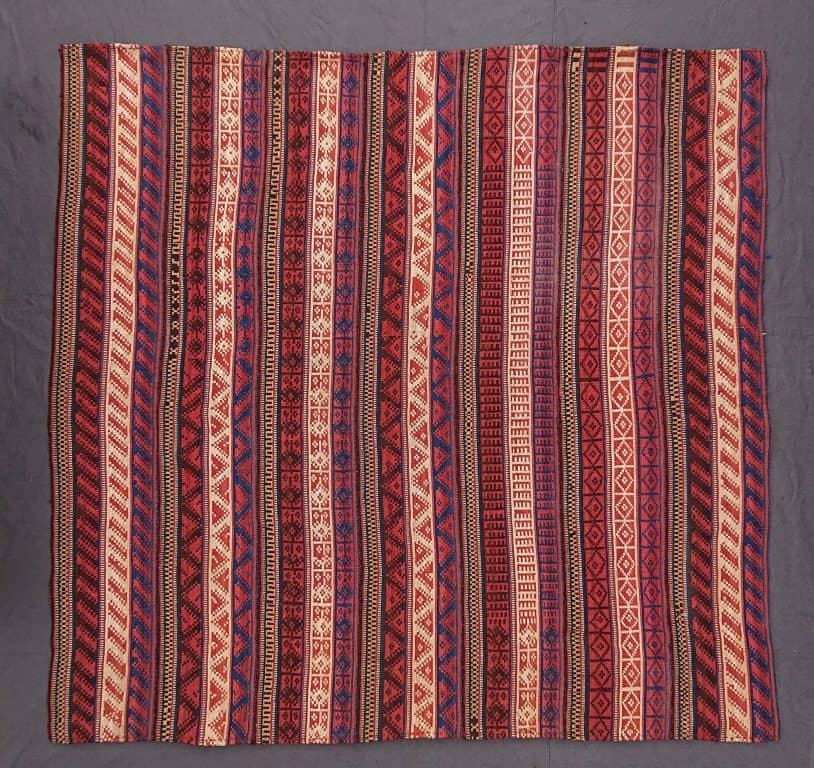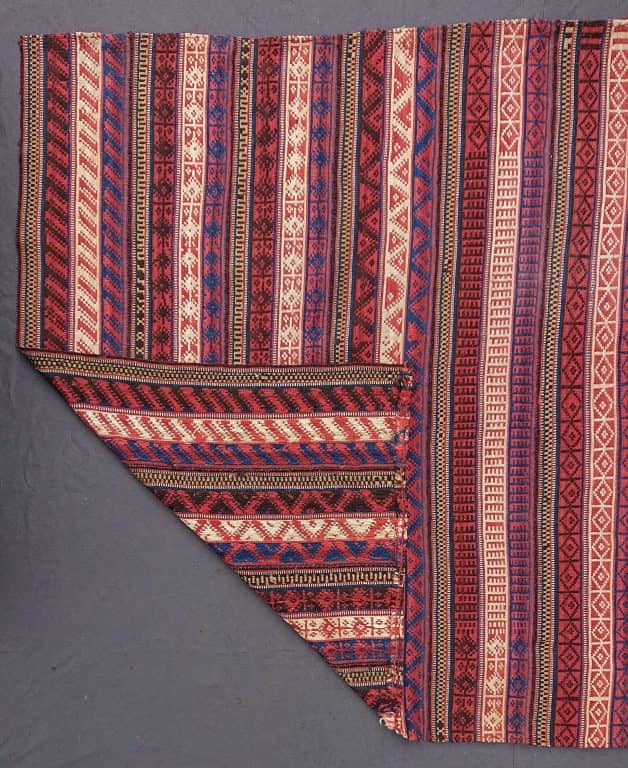Antique Persian Bidjar Jajim
Description
This antique Persian Bidjar Jajim dates to the late 19th century.
Jajims were made by village weavers in narrow strips on a horizontal loom. They were woven in continuous lengths, which required great weaving skills. The loom widths of material were cut and sewn together to form cloths of various sizes, depending on the function they were to serve, from small sofrehs to very large rukorsis ( for other examples, and further descriptions, on this website, see for instance https://www.christopherleggeorientalcarpets.com/products/view/shahsavan-jajim/and https://www.christopherleggeorientalcarpets.com/products/view/sangsar-mazandaran-jajim/). They always served an aesthetic purpose as well, hence the quality of the dyes and, in the case of the example in hand, the wealth of patterns, albeit within the commonly found feature of stripes.
The production of these Jajims was a matter of pride for village women. From carding, spinning, dyeing and weaving to finishing the textile, the processes involved were a huge achievement for one woman, who produced such a piece alongside all her other traditional chores, including possibly carpet weaving as well.
This flat weave from the Kurdish Bidjar area was worked in seven panels, each about 26 cm wide. The weaver created the designs by employing a floating warp (see the additional picture), with the result that the Jajim has great weight and a very heavy handle.
These flat weaves were always heavily used, and it is therefore difficult to find them in good condition. However, this piece is in an excellent state of preservation.
All wool.
£960


